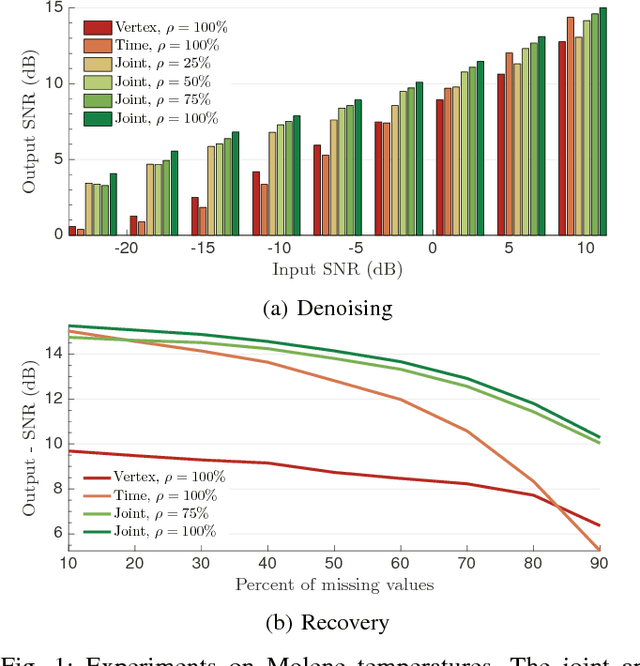Towards stationary time-vertex signal processing
Paper and Code
Jun 22, 2016
Graph-based methods for signal processing have shown promise for the analysis of data exhibiting irregular structure, such as those found in social, transportation, and sensor networks. Yet, though these systems are often dynamic, state-of-the-art methods for signal processing on graphs ignore the dimension of time, treating successive graph signals independently or taking a global average. To address this shortcoming, this paper considers the statistical analysis of time-varying graph signals. We introduce a novel definition of joint (time-vertex) stationarity, which generalizes the classical definition of time stationarity and the more recent definition appropriate for graphs. Joint stationarity gives rise to a scalable Wiener optimization framework for joint denoising, semi-supervised learning, or more generally inversing a linear operator, that is provably optimal. Experimental results on real weather data demonstrate that taking into account graph and time dimensions jointly can yield significant accuracy improvements in the reconstruction effort.
 Add to Chrome
Add to Chrome Add to Firefox
Add to Firefox Add to Edge
Add to Edge